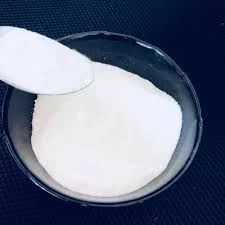
Dec . 12, 2024 09:12 Back to list
use of hpmc
The Use of HPMC A Comprehensive Overview
Hydroxypropyl Methylcellulose (HPMC) is a cellulose ether that has gained considerable attention in various fields, including pharmaceuticals, food, cosmetics, and construction materials. Its versatility and unique properties make it an essential ingredient in many formulations, and its effectiveness in modifying the physical and chemical characteristics of products has been extensively studied.
Pharmaceutical Applications
In the pharmaceutical industry, HPMC serves multiple roles. It is widely used as a binder and film-forming agent in tablet formulations. Its excellent film-forming ability provides a controlled release mechanism, making it an ideal choice for developing sustained-release and controlled-release drug delivery systems. The viscosity of HPMC can be manipulated by varying its molecular weight, allowing formulators to customize the release profiles of medications. This property is particularly beneficial for patients who require consistent drug levels in their bloodstream.
HPMC is also utilized as a thickening agent in topical formulations, such as creams and gels. The ability of HPMC to retain water helps improve the stability and texture of these products, enhancing their ease of application and absorption. Additionally, HPMC's solubility in both hot and cold water broadens its applicability, making it suitable for various formulations, from granules to liquid suspensions.
Food Industry Utilization
In the food industry, HPMC serves as a food additive, often labeled as E464. It acts as a stabilizer, emulsifier, and thickening agent. Its gelling properties are beneficial in producing low-fat or reduced-calorie products, contributing to improved mouthfeel without the added calories from fats. HPMC is particularly useful in gluten-free baking, where it provides structure and elasticity to doughs that would otherwise lack these qualities due to the absence of gluten.
Moreover, HPMC is recognized for its ability to retain moisture, which helps maintain the freshness and shelf life of food products. In processed foods, it forms a gel-like matrix that can encapsulate flavors and nutrients, providing a significant advantage in enhancing the overall sensory experience of the consumer.
use of hpmc

Cosmetics and Personal Care
The personal care industry has also embraced HPMC because of its versatility and safety profile. In cosmetic formulations, HPMC acts as a thickener and emulsifier, improving product stability and texture. It is a common ingredient in lotions, creams, shampoos, and conditioners, where it enhances skin feel and spreadability.
Moreover, HPMC is often used in hair styling products due to its film-forming capabilities, providing hold and shape to hairstyles while ensuring that hair remains flexible and manageable. Its non-ionic nature makes it suitable for use in sensitive skin formulations, minimizing the risk of irritation for consumers.
Construction and Other Applications
Beyond pharmaceuticals, food, and cosmetics, HPMC has found applications in the construction industry, particularly in tile adhesives and cement-based products. Its water-retention properties are invaluable in preventing the rapid evaporation of moisture, ensuring proper setting and adhesion of materials. HPMC also improves the workability and viscosity of construction mixtures, making them easier to apply and manipulate.
HPMC’s role as a biodegradable and environmentally friendly additive also aligns with current trends toward sustainability in product development. Its natural origins and non-toxic nature make it a preferred choice in a world increasingly focused on reducing chemical footprints.
Conclusion
The myriad applications of HPMC across diverse industries underscore its significance as a multifunctional ingredient. Its unique physicochemical properties enable formulators to create innovative products that cater to the evolving needs of consumers. As research and development continue, we can expect HPMC to play an even more prominent role in future formulations, driving advancements in product performance and sustainability in various sectors. By harnessing the potential of HPMC, industries can continue to push the boundaries of formulation science, crafting products that enhance quality of life while remaining environmentally conscious.
-
Versatile Hpmc Uses in Different Industries
NewsJun.19,2025
-
Redispersible Powder's Role in Enhancing Durability of Construction Products
NewsJun.19,2025
-
Hydroxyethyl Cellulose Applications Driving Green Industrial Processes
NewsJun.19,2025
-
Exploring Different Redispersible Polymer Powder
NewsJun.19,2025
-
Choosing the Right Mortar Bonding Agent
NewsJun.19,2025
-
Applications and Significance of China Hpmc in Modern Industries
NewsJun.19,2025







